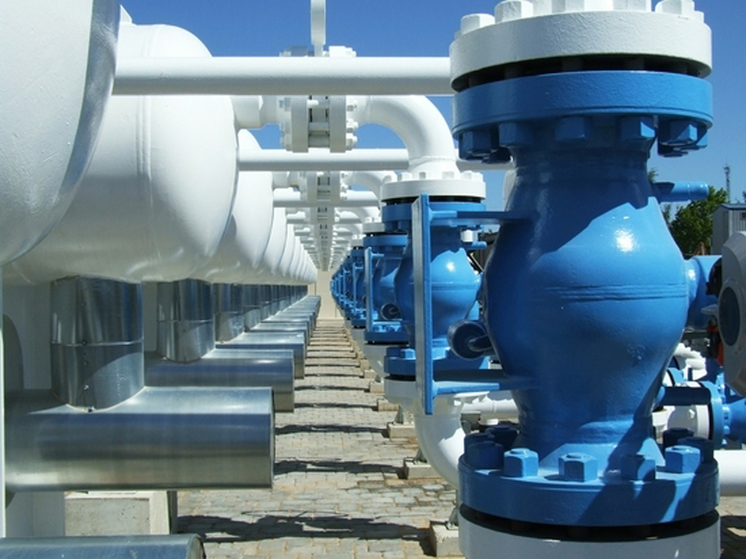Expert Yushkov: “The chances of extending the contract with Kiev are scanty”
Everything goes to the fact that the contract for the transit of Russian gas to Europe through the territory of Ukraine will not be extended after 2024. It is unlikely that Moscow and Kyiv will be able to agree, the head of the Ukrainian Ministry of Energy Herman Galushchenko told the Financial Times. According to him, remaining one of the last pipeline arteries through which Russian energy resources enter the EU, the Ukrainian route provides about 5% of global imports to the region.

According to the consulting company ICIS, transit through Ukraine provides about half of Austria's gas needs and up to 95% of Slovakia's. There is also the Turkish Stream (with comparable pumping volumes), which supplies the countries of southeastern Europe with raw materials. According to the agreement signed by Russia and Ukraine at the end of 2019, Gazprom guarantees the pumping of 65 billion cubic meters of gas in the first year and 40 billion each in the next four. At the same time, the Russian company undertook to pay about $7 billion for transit. However, by 2023, the volume of deliveries was reduced by almost three times, to 12 billion cubic meters. Earlier, in May 2022, Ukraine stopped receiving gas through the Sokhranivka gas measuring station (GIS), citing the fact that it is located on the territory of the LPR. As a result, only one entrance remained for transit to Europe — GIS «Sudzha». Gazprom, however, stated that the transfer of all volumes to it is technologically unrealizable.
According to Ukrainian Minister German Galushchenko, Europe is ready to reduce supplies from the Russian Federation — by reducing domestic demand and looking for alternative sources of imports, primarily LNG. However, FT analysts see risks of price destabilization on the continent in this scenario, even if we are talking about small dropping volumes of gas. And yet, are there any chances to extend the transit agreement between Kiev and Moscow? We asked Igor Yushkov, an expert at the Financial University under the Government of the Russian Federation, about this.
-Given the severity of mutual claims, the chances are scanty. Moreover, the contract can be terminated long before the expiration date in December 2024, — says the interlocutor of MK. – It is impossible to sign a new treaty without settling differences over the old one. However, the situation was frankly deadlocked. The “GTS Operator of Ukraine” accuses Gazprom of failing to comply with the “pump or pay” condition, and the latter, in turn, points out to the opponent that the condition under which he has the right to choose the route for the delivery of raw materials has been violated. Kyiv, after all, blocked one of the branches — the southern route through the Sokhranovka GIS, and now Gazprom has to use the Sudzha station exclusively.
As a result, instead of the 109 million cubic meters of gas indicated in the contract, no more than 42-43 million are produced daily, although Ukraine demands that all the agreed volumes be transferred to Sudzha. According to Gazprom, this is technically unfeasible: the company has long ago optimized the gas transportation system in the Russian Federation by dismantling pipes that have become unnecessary. In addition, Gazprom does not intend to apply to the international arbitration court, considering such a step to be meaningless. Finally, from a political point of view, the signing of a new contract will lead to huge image costs for both sides in a state of armed conflict.
— This will allow Russia to maintain its presence in the market of Western and Central Europe, despite the fact that the current supply volumes are at a maximum of 12-15 billion cubic meters per year. But it usually comes out less, since demand for Russian gas in the EU falls from time to time due to pricing peculiarities. In any case, it is better not to lose even such volumes. Previously, Russia accounted for 36% of EU gas imports, now it is about 5%. Plus, Ukrainian transit remains the only and last way to deliver Russian gas to Austria, the Czech Republic, Slovakia, Germany, Italy, France and a number of other countries. Albeit in small amounts, but still. Secondly, for Gazprom and the Russian state, this is a clear financial benefit: budget revenues, export duties, mineral extraction tax and various kinds of dividends … As for Europe, from an economic point of view, 15 billion cubic meters is absolutely not superfluous . Try to find them now! Their loss may provoke an increase in prices in the European gas market. Remember what a mess it has been for the last three years: in 2021, raw materials rose in price to a thousand dollars per thousand cubic meters, in 2022 — up to 2 thousand, recently prices fell to 270, then jumped to 550 in one day.
< p> So it is premature to say that the Europeans have rebuilt themselves and now live in new realities: the specter of the energy crisis has not disappeared anywhere. The recession in the EU economy led in 2022 to a reduction in gas consumption on the continent by 60 billion cubic meters. Physically, there will be enough gas for Europeans, the main threat is precisely the rise in prices.
— The fact is that, unlike Ukrainian transit, gas is actually transported through this pipeline only to the Balkans. Accordingly, we are talking about two different markets: in the first case, the countries of Central and Western Europe are supplied with raw materials from Russia, in the second — Greece, North Macedonia, Romania, Serbia and Hungary. Plus, the Bulgarians buy Russian gas through intermediaries in Turkey: Sofia, let me remind you, refused to deal directly with Gazprom, not wanting to switch to ruble payments.


